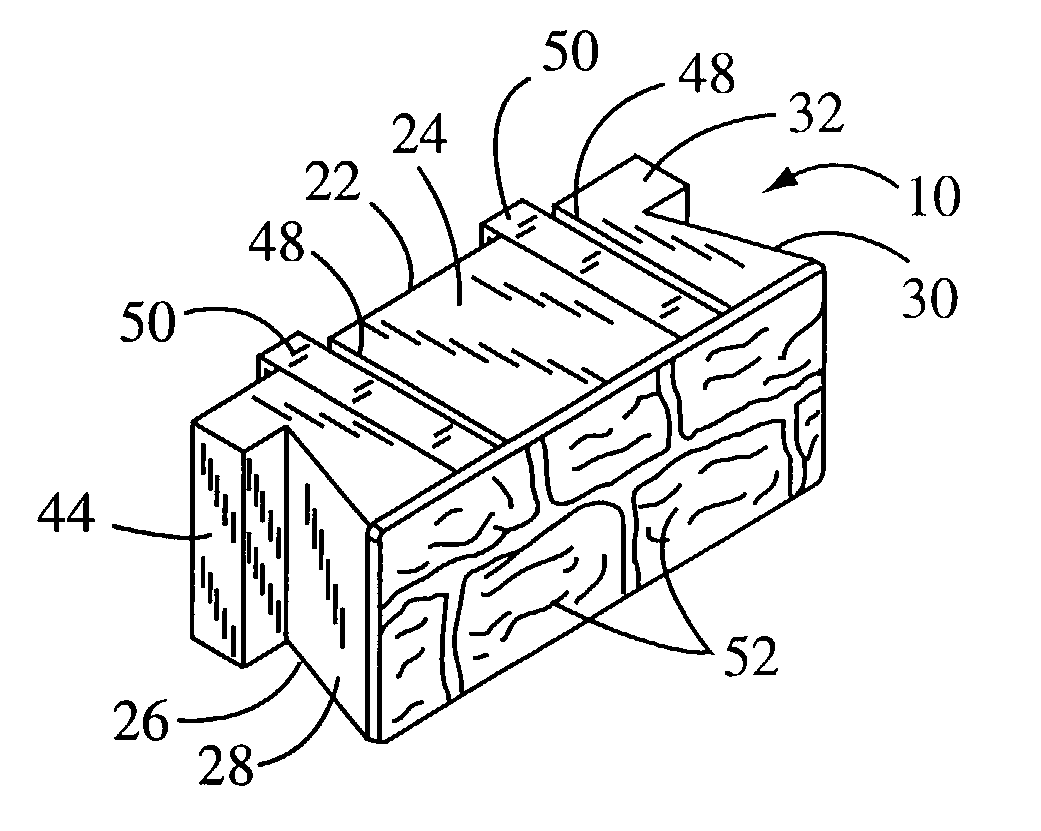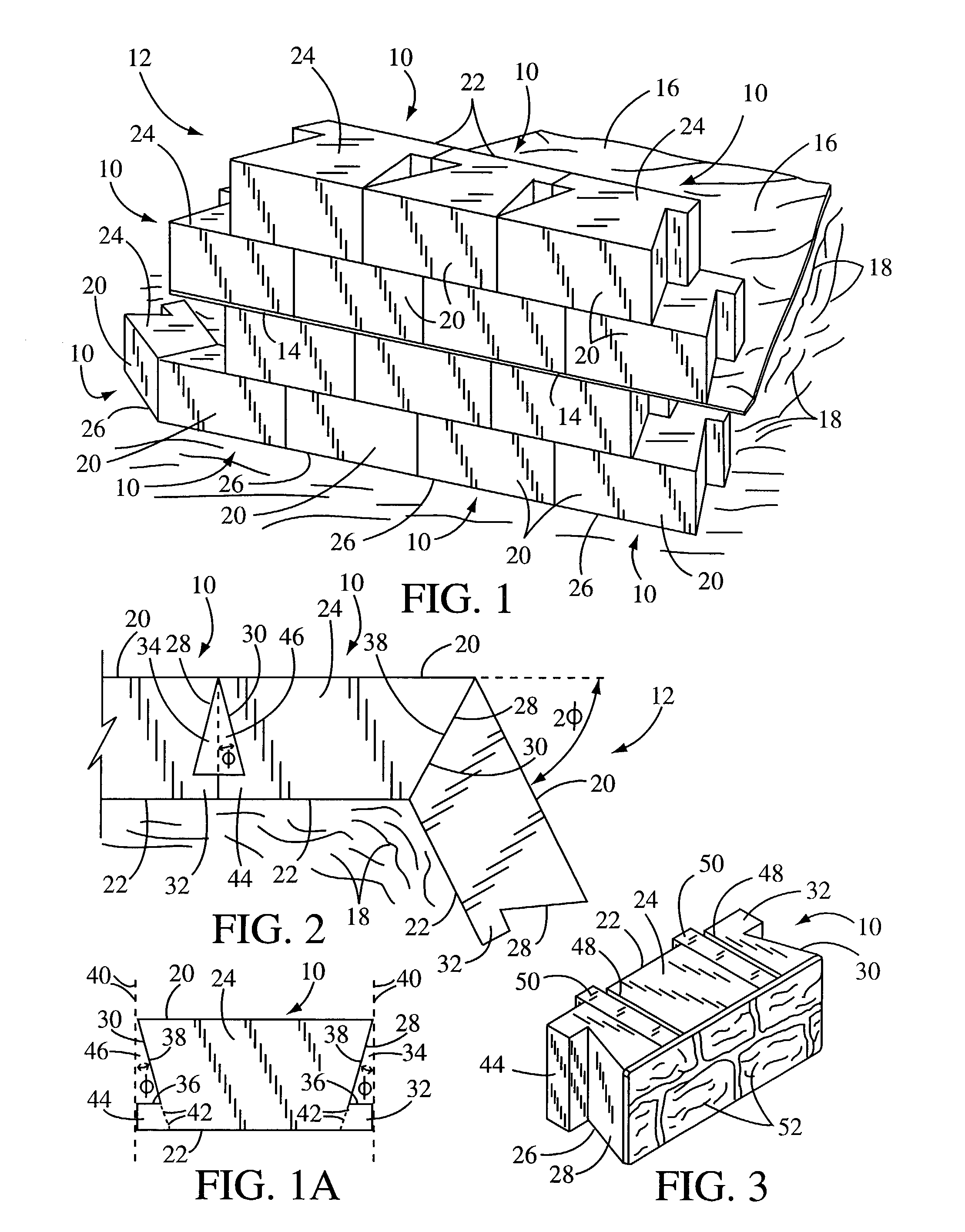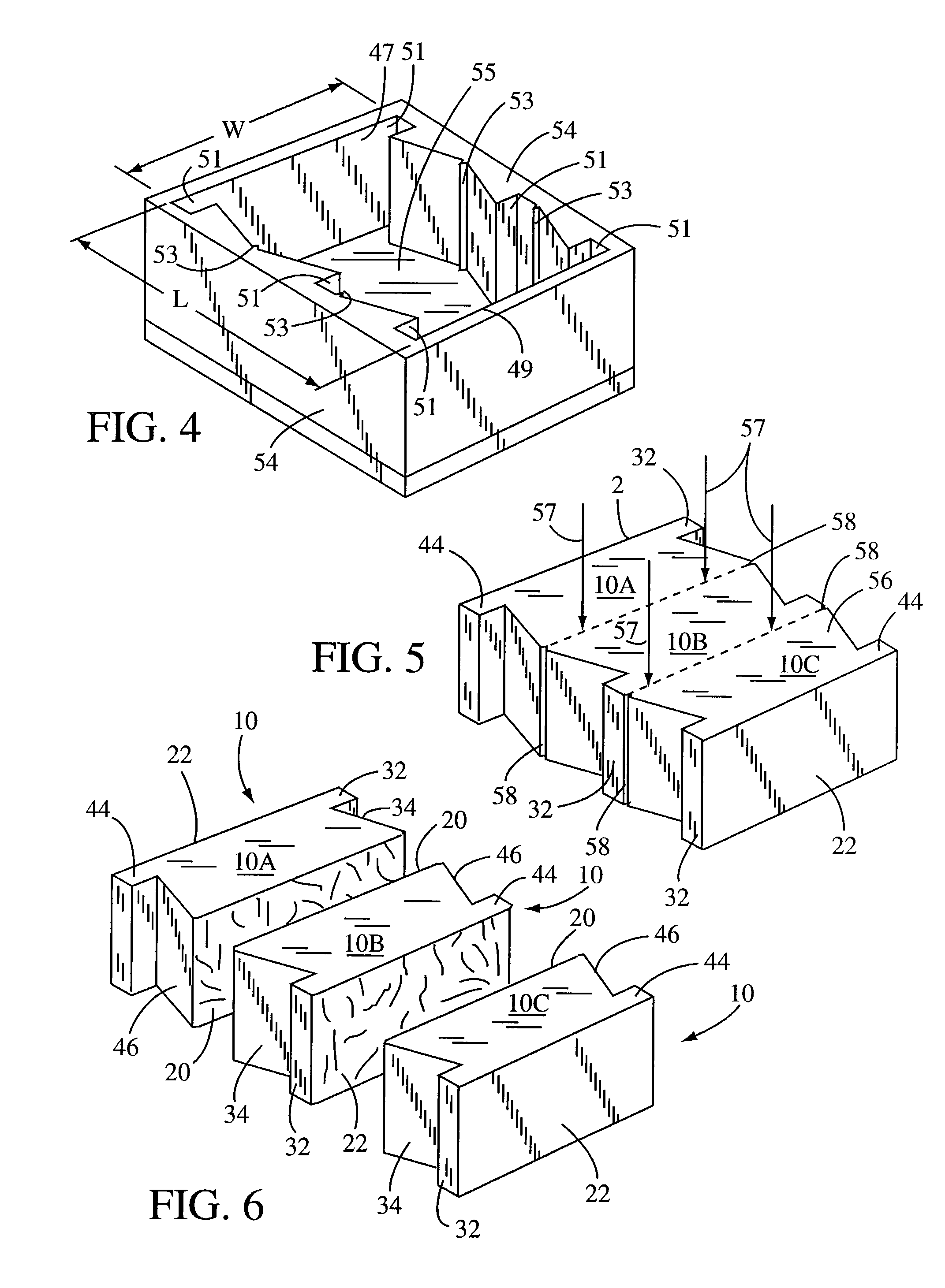Solid core concrete block and method of making a concrete block retaining wall
a concrete block and solid core technology, applied in the field of concrete block retaining walls, to achieve the effect of convenient stacking
- Summary
- Abstract
- Description
- Claims
- Application Information
AI Technical Summary
Benefits of technology
Problems solved by technology
Method used
Image
Examples
Embodiment Construction
[0024]In FIG. 1, a perspective view of a plurality of the subject solid core concrete blocks are shown and having general reference numeral 10. The blocks 10 are used for forming a concrete block retaining wall. The retaining wall is shown having a general reference numeral 12. The retaining wall can be straight wall, curved wall or angled wall or a combination of both. This drawing illustrates four rows of the blocks 10 with one side 14 of a fabric sheet 16 received between the second and third rows of blocks 10. The fabric sheet 16 extends from the rear of the retaining wall 12 and is received over dirt backfill 18. As the rows of blocks 10 extend upwardly additional fabric sheets 16 can be installed between every row of block or as required with additional compacted dirt backfill 18 placed on top of the sheets. The sheets 16 are used to hold the retaining wall in place due to pressure from the compacted dirt behind the wall. It should be noted that the solid core blocks have suff...
PUM
| Property | Measurement | Unit |
|---|---|---|
| angle | aaaaa | aaaaa |
| angle | aaaaa | aaaaa |
| angle | aaaaa | aaaaa |
Abstract
Description
Claims
Application Information
 Login to View More
Login to View More - R&D
- Intellectual Property
- Life Sciences
- Materials
- Tech Scout
- Unparalleled Data Quality
- Higher Quality Content
- 60% Fewer Hallucinations
Browse by: Latest US Patents, China's latest patents, Technical Efficacy Thesaurus, Application Domain, Technology Topic, Popular Technical Reports.
© 2025 PatSnap. All rights reserved.Legal|Privacy policy|Modern Slavery Act Transparency Statement|Sitemap|About US| Contact US: help@patsnap.com



